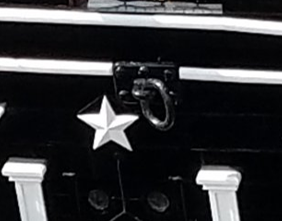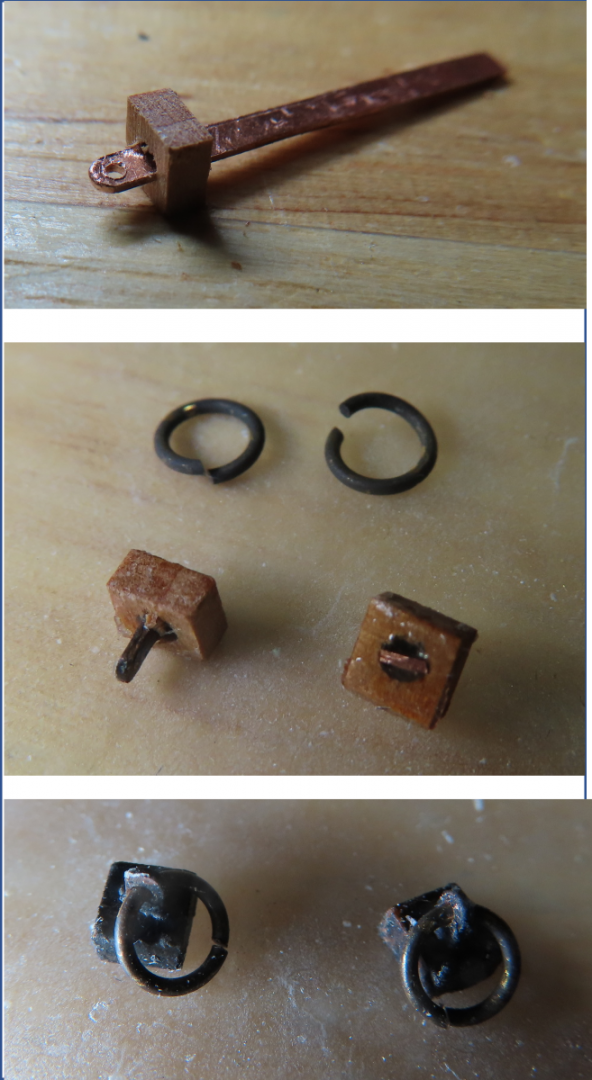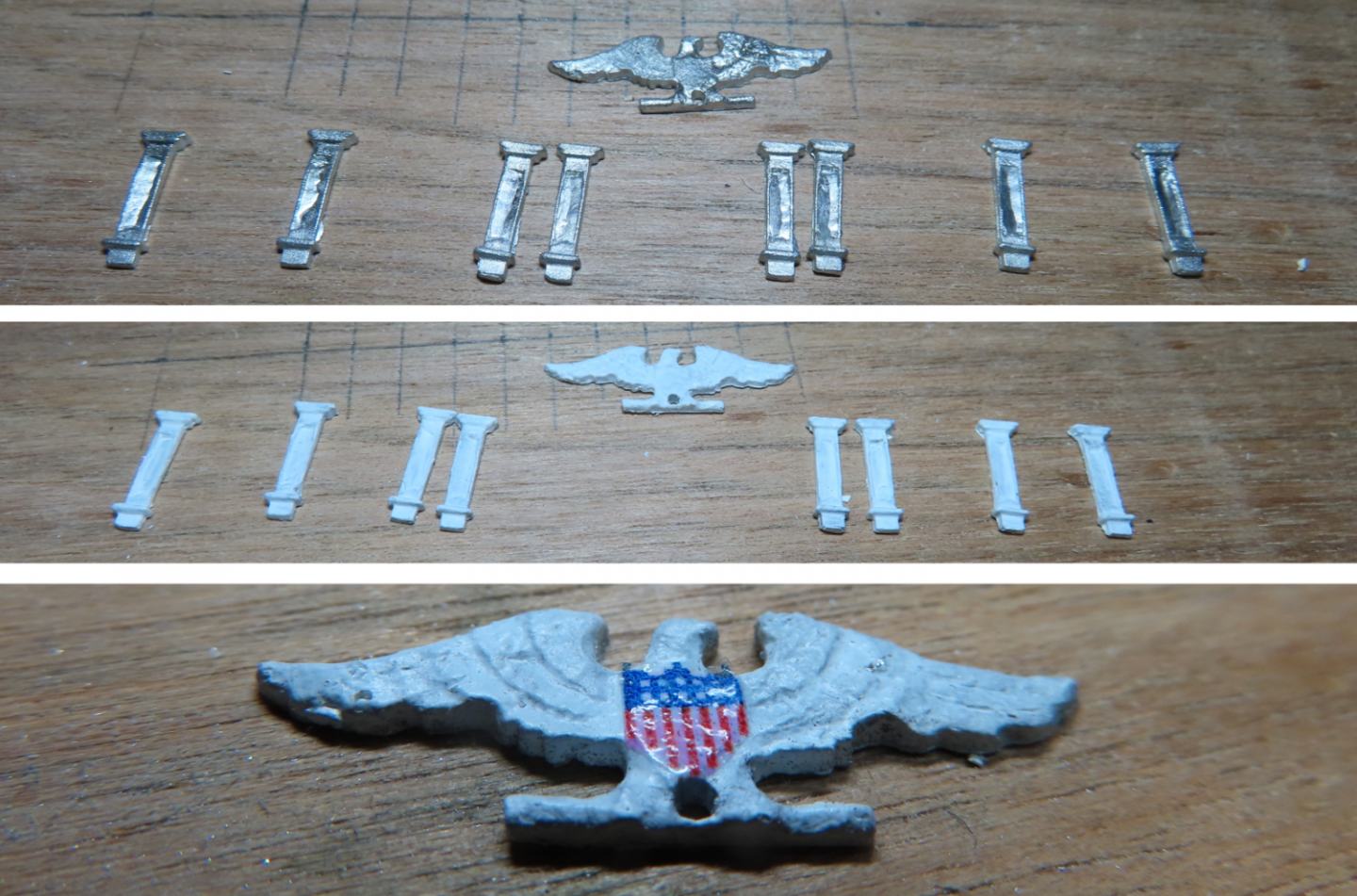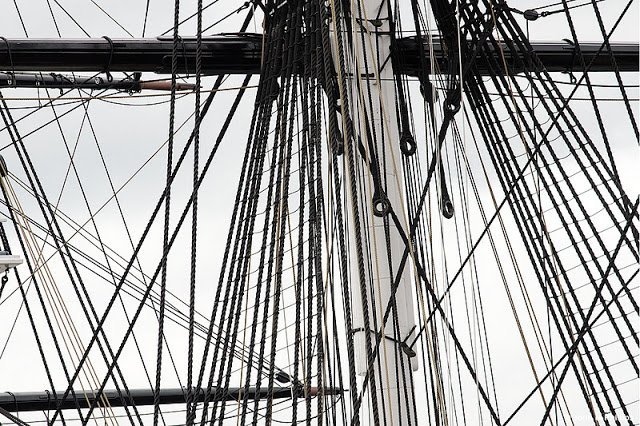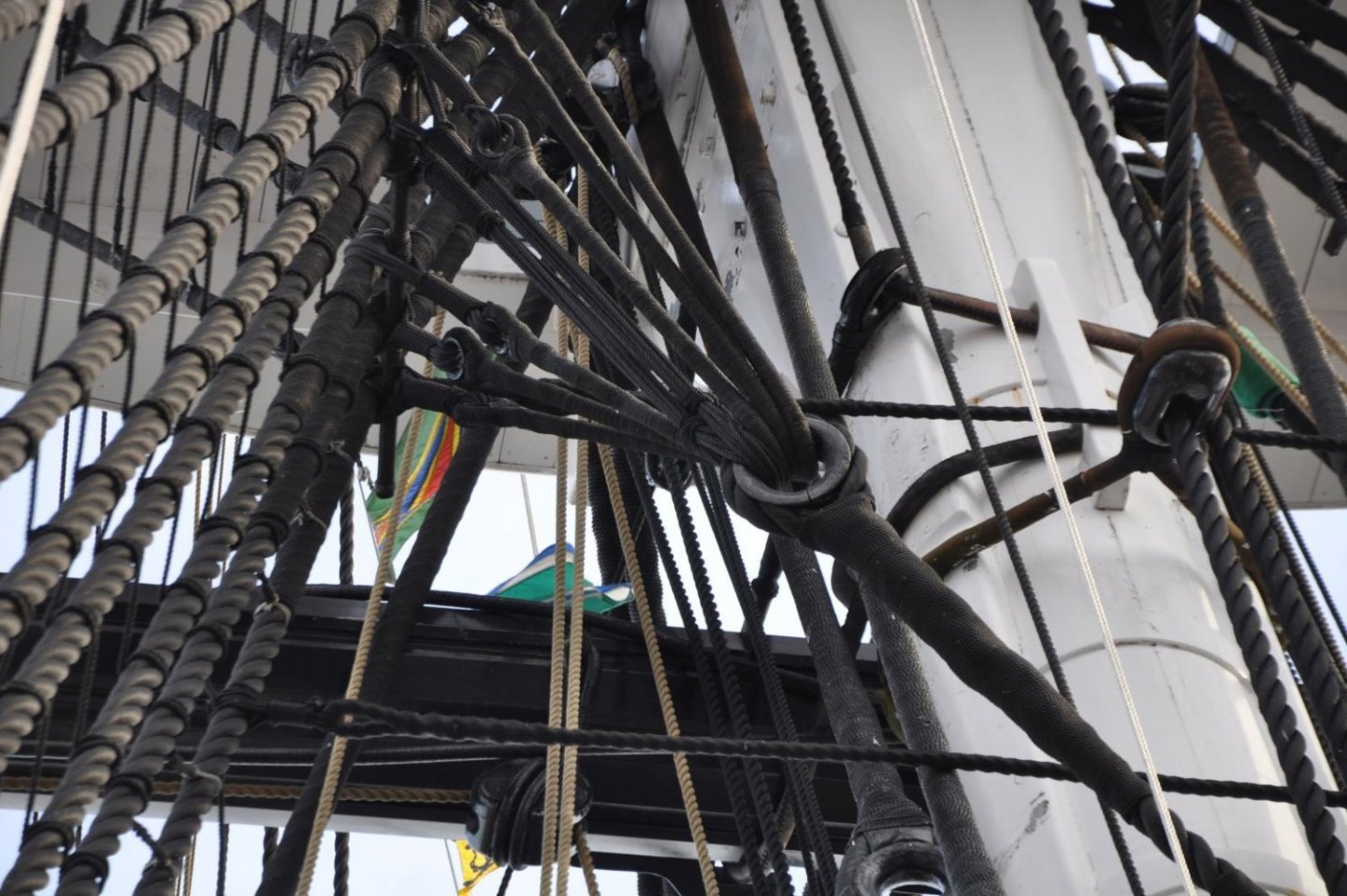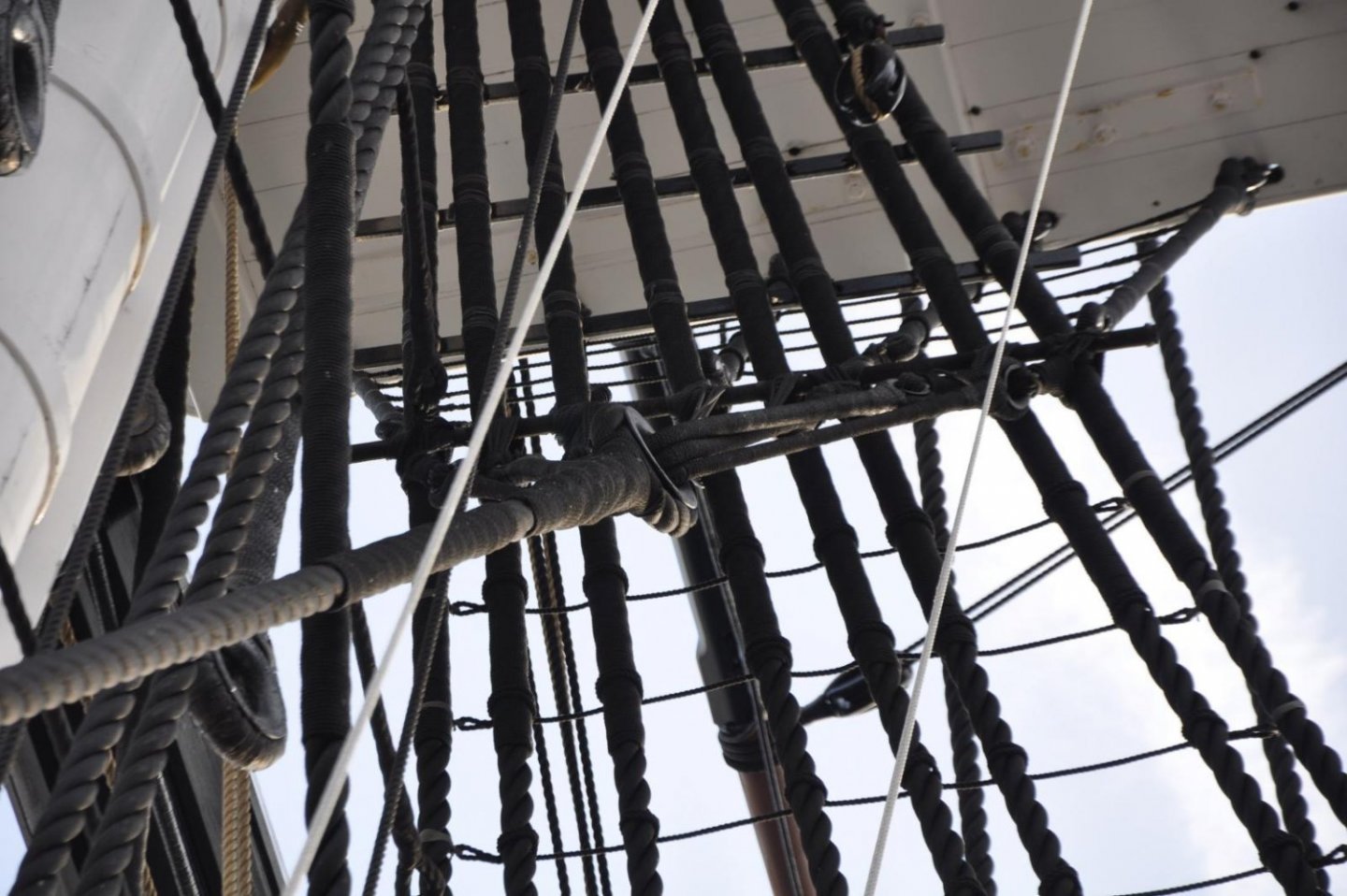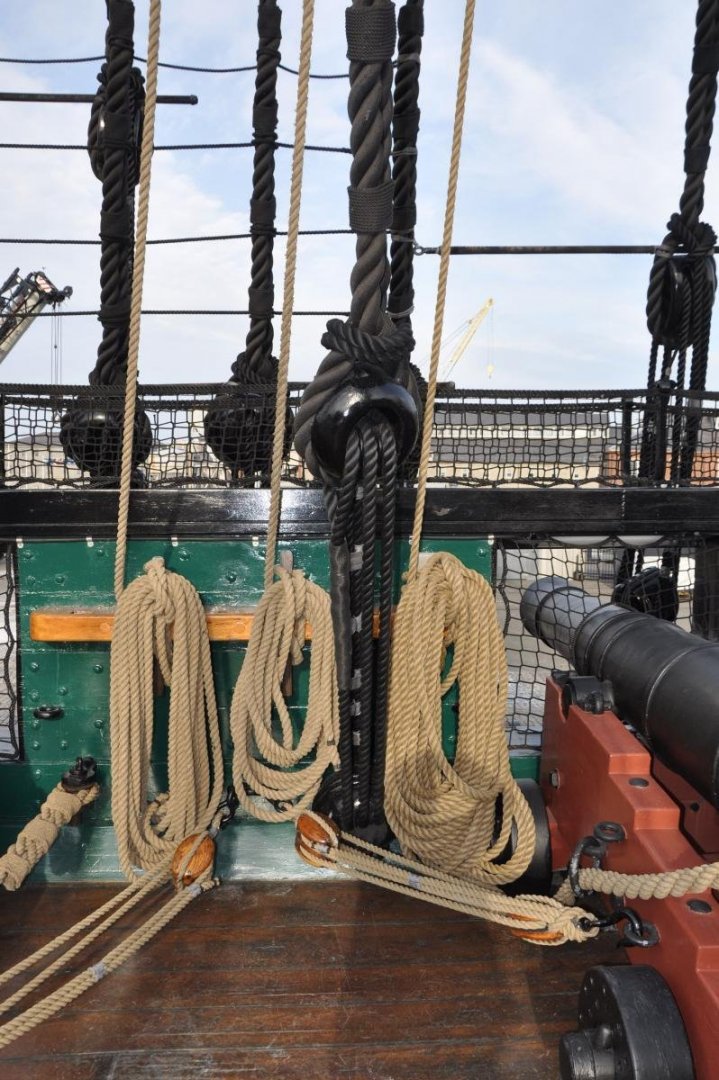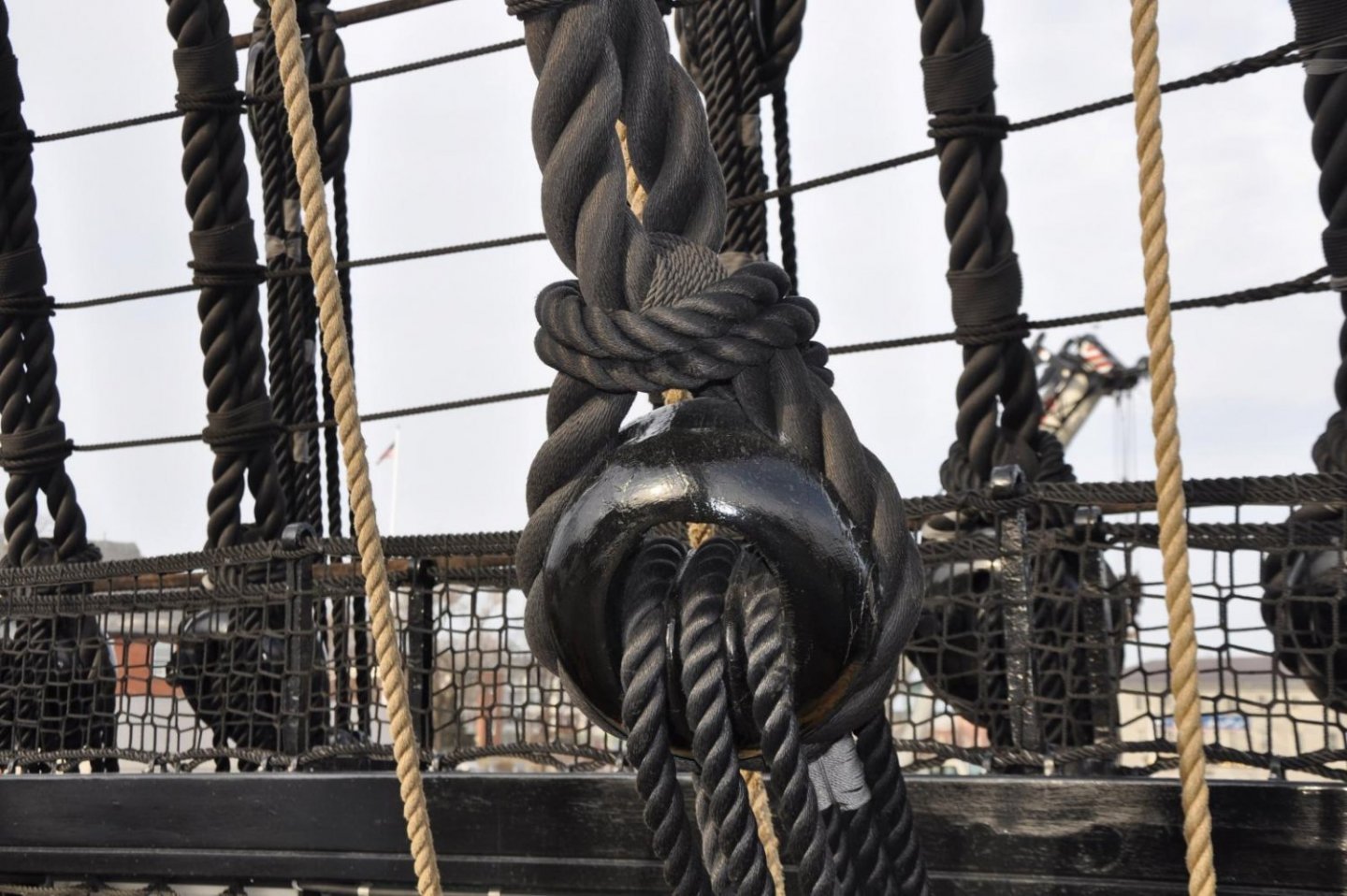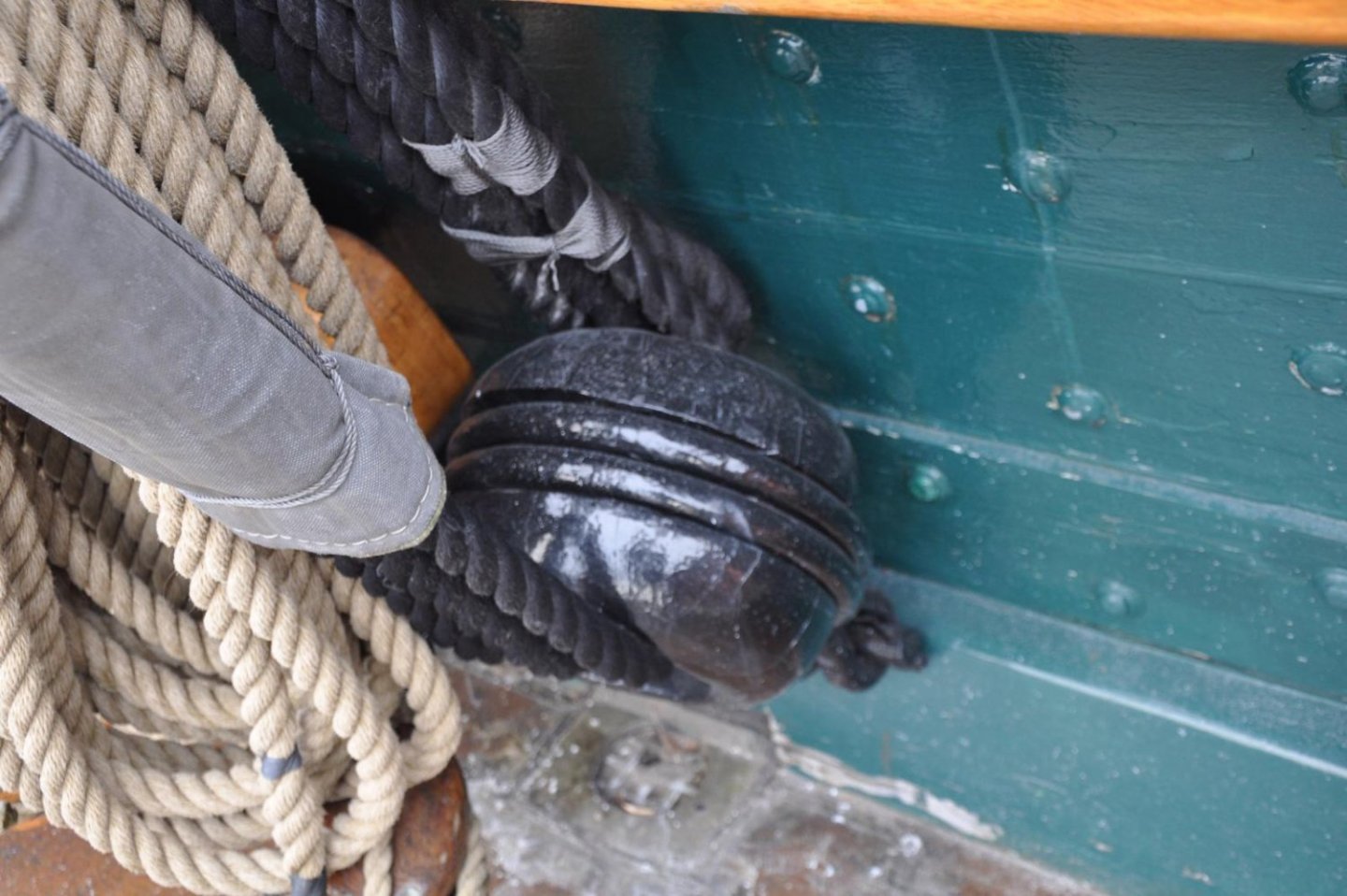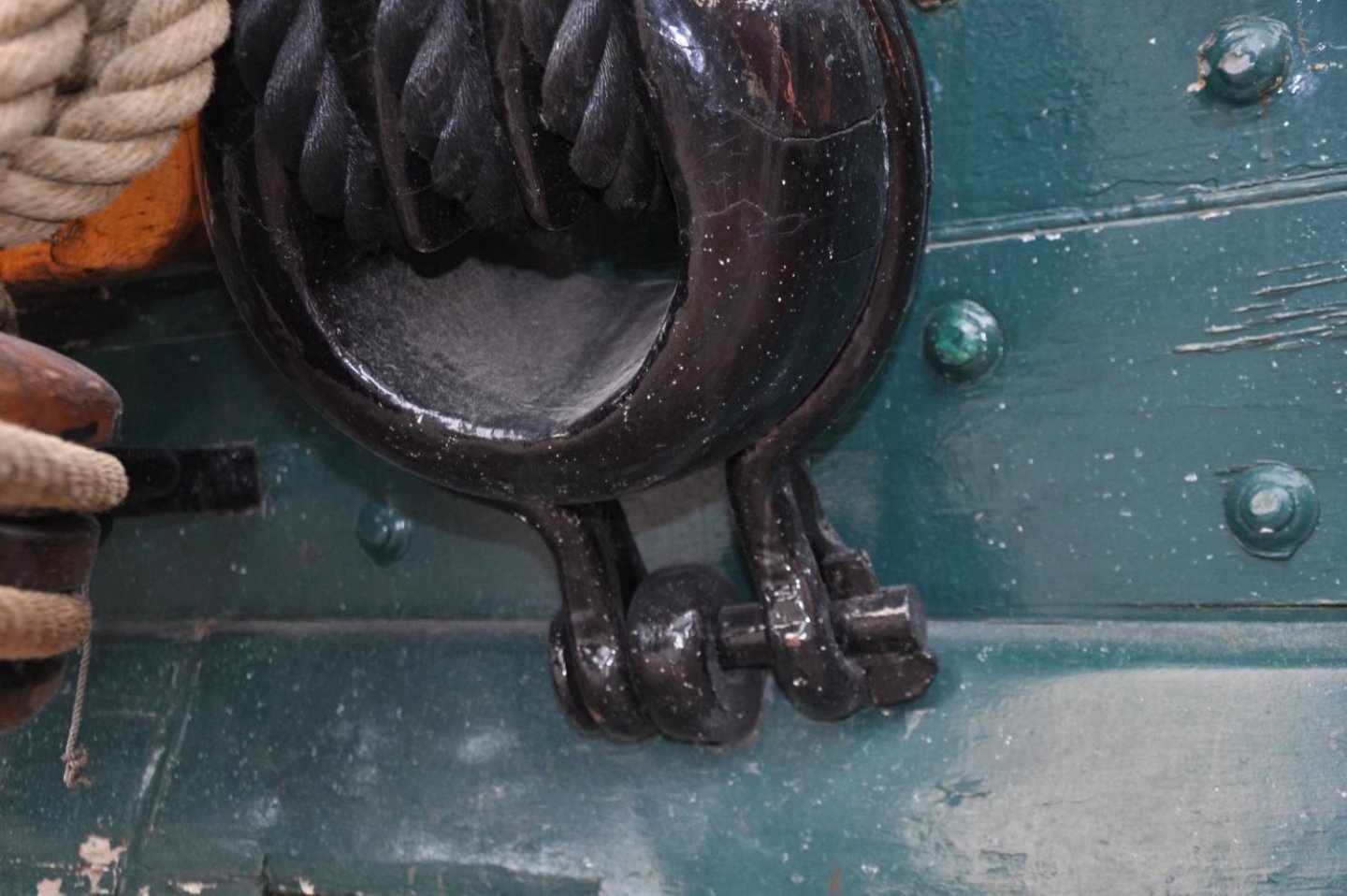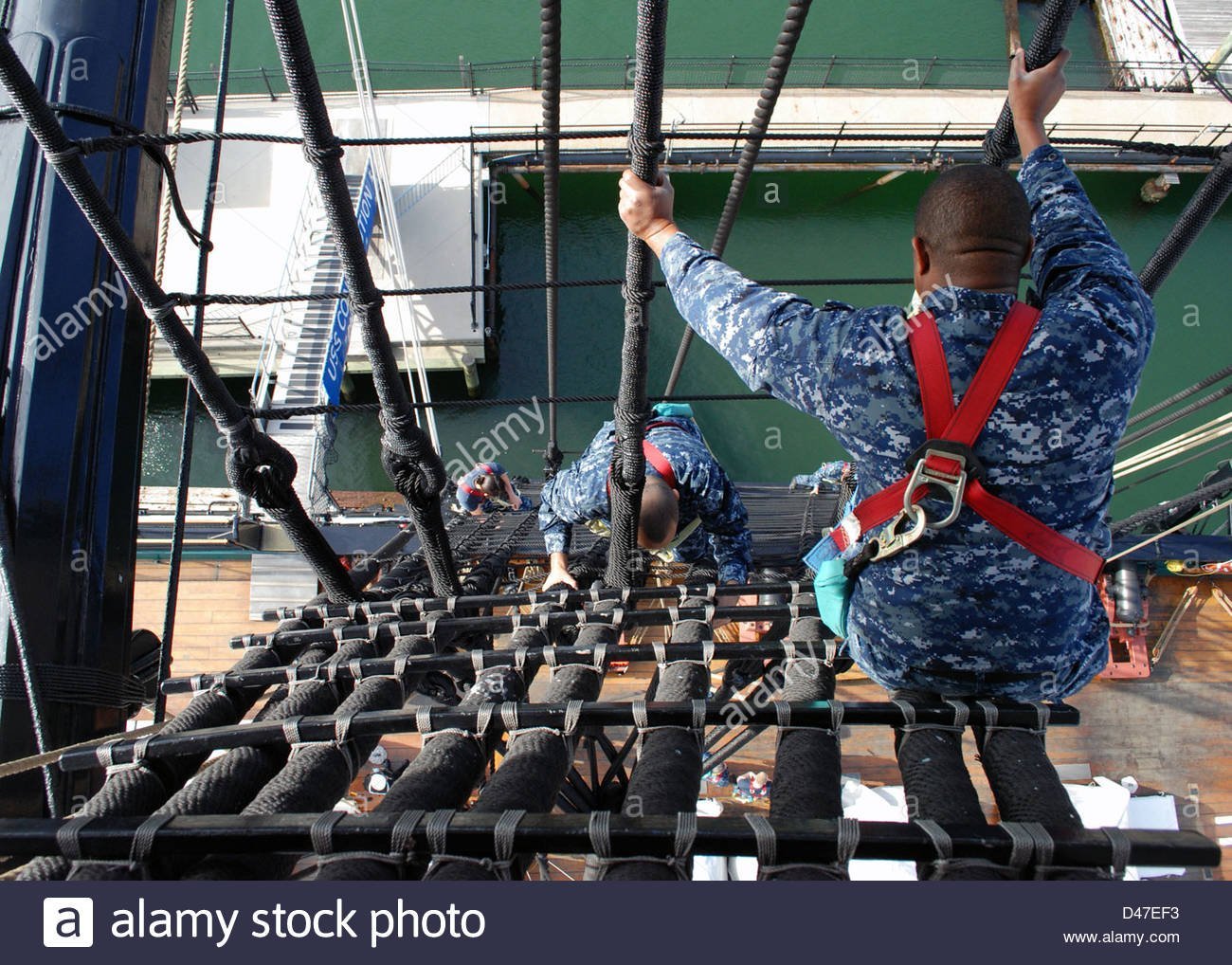-
Posts
2,611 -
Joined
-
Last visited
Content Type
Profiles
Forums
Gallery
Events
Everything posted by JSGerson
-
Transom Ring Bolts There are two large ring bolts located on either side of the eagle. A horizontal tab with a hole in it holds the vertical ring. The bases were made of 1/8” x 1/8” x 1/16” pieces of wood. The horizontal tab was fabricated from 0.016” copper plate. I wanted to use brass plate, but I didn’t have a brass plate thick enough. Holes were drilled into the tabs to accept the ring and the end was filed to a half round. Both the copper tabs and the rings were blackened. The wood blocks were painted black, and holes were drilled to accept the horizontal copper tabs. The tabs were inserted into the block holes and glued with PVC glue so that the glue also acted a hole filler. Finally, the excess copper was cut off and the back of the block sanded flush. The rings were then inserted into the tab holes. The white transom trim was cut to accept the ring bolts and they were glued into place. The gun port lids are the last thing to be installed on the transom. These I will hold off on until I install all the lids to ensure consistency in fabrication.
-
Transom Stars If you look carefully at images or the actual ship transom, you will notice that there are 6 white stars which are mounted on pentagon bases which in turn are mounted to the transom. The practicum provides a template for the stars. Four are one size while the two outside end ones are slightly smaller. The kit shows them on the plans but does not provide any laser cut or precast stars. Neither the kit nor the practicum addresses the pentagon backing. The US Navy plans do provide the details for the complete star. Using this information, the stars and pentagons were printed to scale, cut and rubber cemented to 1/64” plywood. The plywood was cut to shape. It should be noted that the stars are faceted and not flat in real life, but at 1/76.8 scale that detail is lost and not worth the effort to recreate. If fact, I had difficulty just creating the star’s basic shape due its small scale. The stars were painted white and pentagons black, then assembled as one unit.
-
Transom Gun Port Columns and Eagle The practicum gives the builder two choices: use the kit provided columns or scratch build them. Mr. Hunt scratch built his from styrene. In the end he states: “the kit parts, when painted white are quite adequate and due to the size of the parts, I feel it will be very difficult for most to make these pillars.” In this case, I chose the easier route, and used the kit parts For the eagle, I used the kit provided pre-cast decoration. I have no carving talent. The practicum provides a scaled image of the eagle chest flag shield, which it instructs to be printed on paper and cut out to be glued on. I chose to make a decal. The decal was applied to the eagle and coated with a small amount of softening agent, Micro Sol. This allowed the decal to conform better to the minor irregularities of the painted precast metal. Note the decal is shiny in this image because it was still wet when I took the picture.
-
Port Holes There are port holes the on either side of the gun ports. After the hole positions were measured, they were drilled in. I didn’t want to leave the holes open so used a piece of clear plastic from an old car model’s parts tree. Using my Dremel drill as a lathe, I filed the plastic as it was spinning in the drill till it obtained the proper hole diameter. I sliced off two pieces and when placed into the porthole openings, they had a nice snug fit. No glue was necessary. Voila, “glass” portholes.
-
I remember someone had commented somewhere on another build log that one should paint the white styrene, white. He claimed that over time the plastic tended to yellow a bit. I also find that the styrene has a sort of translucent look to it, so it doesn’t quite match the look of the white paint wood. Therefore, instead of using the Styrene molding strip straight from the package, I painted it white. I also tried to pre-bend the styrene to give it some bend memory to make it easier to install. I bent the plastic to shape and held it overnight. I wanted to heat it as well, but my hair drying just didn’t get hot enough. In the end, the pre-bending didn’t help that much. Following the practicum, I CA glued the transom gluing a little at a time while bending it. What did surprise me was the effect CA glue had on the plastic. It made it brittle and made the plastic break as I was bending it as shown in the images below. The broken pieces were repaired and glued back into position. Please note, the piece of wood between the styrene strips was used as a spacer.
-
Transom Trim Continued Double arch The practicum chose not to use the laser cut double arch molding because they: Became very fragile once removed from the laser cut board Were square cross section whereas the actual molding is half circle cross section Were difficult to shape and sand As much as I wanted the trim to be made from wood, it was much more practical to follow the practicum guidance and use white 0.060" half round styrene. Like the practicum directed, I used the kit's laser part to pencil in a faint line across the transom where the styrene piece was to go. By holding the laser cut piece in place with one hand, I traced around one edge with the other marking the curvature on the transom with a pencil which you can just see in the second image. The first image below shows the actual transom as a reference.
-
Very nicely done. Just be extra careful once the gun port lids are installed onto the hull. I would wait until the last possible moment before installing them. The open lids are fragile and are easily knocked off. Are you going to paint the interior face of the lids black like the contemporary images show? Jon
-
Tom, those "heavy lines which end in thimbles are called Burton Pendants. From David Antscherl's book, "The Fully Framed Model, Rigging a Sixth Rate Sloop of 1767-1780" Vol IV: “Burton Pendants are served lines that were slipped over the mastheads prior to stepping the lower masts in full-sized practice. Blocks and tackles were then attached to them for hauling up to the tops and other items of rigging.” They are an essential part of the ship. I have collected a vast photo library for my build of the Constitution. Here are some images of the bentinck shroud rigging and burton Pendants that I have. Jon
- 163 replies
-
- Model Shipways
- Constitution
-
(and 2 more)
Tagged with:
-
Next, the lower decorative moldings were added to the quarter galleries which no flat surfaces. To make them wrap around the galleries, they had to be bent both horizontally and vertically which was a bit tricky. I’m not proud of the craftmanship, but it’s what I got with the skills I have. It could have been better, and it could have been worst. It’s what I now have. There is still a bunch left to do on the transom, but at least they are on a relatively flat surface.
-
Ship’s Nameplate Separating the lower decorative molding on the transom is the ship’s nameplate. To create this, I used the US Navy plan as my guide. The nameplate shown on the kit’s plans is very close to the Navy plans, but the Navy plans provided the actual dimensions. But like the kit, I had to make compromises due to scale issues. In the end, I used a 1/16” wide x 1/32” thick strip of boxwood cut to the proper length. The corner notches were filed in, and the side were beveled slightly. With a couple coats of paint, the edges were painted white and the face black. Finally, the face was cover with a clear coat of Minwax Polycrylic Protective Finish for a smooth finish. Following the instructions of the practicum, I bought a single sheet, item MG6740, 45° USA Gothic White dry transfers made by Woodland Scenic. This sheet has several different sized white letters and numbers sets. I used the 3/32” set. I bought other different sheets as well which I will discuss when I use them. To transfer the lettering, I drew some guides lines as a visual aid on a piece of wood which was then covered by a length of double sided tape. The blank nameplate and a copy of the name plan (reduced to scale) were then laid on the tape. The plan image acted as my layout guide. All I had to do was burnish the transfer letters onto the nameplate below the corresponding letter on the plan. To make the burnishing a bit easier, I cut the 3/32” set off from the original dry transfer sheet for easier handling. Once all the letters were applied to the name plate, another coat of Polycrylic Protective Finish was applied to protect and seal the dry transfers.
-
The next piece of trim to be added to the quarter galleries was the decorative molding just under the windows. The thing is, the quarter gallery molding must line-up with the transom molding and the molding on the opposite quarter gallery. A length of 3/32” boxwood strip was scraped to create the grooves in the decorative molding. First, the transom molding was installed just below the window/gun port openings Then using that molding as a guide, the quarter galleries’ moldings were installed. Finally, the remaining decorative blocks were added to the quarter galleries. All the decorative boxwood panels, blocks, and moldings were pre-painted prior to installation and touched up later if required.
-
Greetings and salutations, Tony from Sydney Australia! Glad you are enjoying my build log. Whoever said these were the "golden years" didn't realize they get very rusty as we get older (I'm 75). Although I "complain" a bit, I am very grateful that in reality, I am in relative good health. No real pain, tremors, or lack of motor skills. Well, maybe lack of some modelling skills. Hopefully, I've had the last of my back and eye surgeries...at least for a while. I wish you well on your Endeavor. Jon
-
Another month has gone by since my last post. I previously mentioned that I had the first of two scheduled eye surgeries. As it turned out, I needed additional surgery to tweak the first surgery and then I had surgery on my left eye for a total of three operations. Although these were 2 hr. outpatient procedures, it slowed me down more than my usual slow self. BTW, the surgeries were to correct a condition where my lower eyelashes curled in, irritating the eyeballs, which affected my sight. However, some progress has been made to the model, sort of. It’s not to my liking, but I will have to accept it. Adding the trim work to the quarter galleries revealed glaring distortions which I tried to minimize. How successful I was, is for you to judge. The key to my frustrations was of course, I did not have a true plan view or image of the windows. After all my effort, the trim and the windows didn’t align as I would have liked it, but I am moving forward.
-
I DID cut down the bulkhead gun deck to compensate for the additional gun deck planking and yet my mock-up gun was too short as well. I was surprised that your guns were short, but you stated that was because the MS carriages were too short. For you, that should have cancelled each other out - the higher deck and the short carriages. That's odd it didn't. However, since I have to do what you are doing with the carriages, I really appreciate your little jig on how to accomplish this task. I've put this little task off until I do more work on the hull. Jon
-
Since my last posting, I’ve had my first of two eye surgeries, actually on my lower eye lid. Once the outpatient procedure was done, I looked like I had a bout with Mike Tyson. I had quite the shiner on my right eye. My eye is still blood shot, but the swelling has gone down a bunch. Needless to say, it has added another in a long list of excuses why I haven’t made much progress this past week. I did try though. In preparation for the trim work for the quarter galleries, I needed to make some more trim from stock. That meant setting up the Dremel drill to make more scrapers. All I managed to do was break two grinding discs before I even turn on the tool. Realizing I could not see well enough yet to make the trim, I did managed to paint the transom black which had to be done anyways.
-
Just started to follow you. You are moving along very nicely. I also am putting in a gun deck, but my model will reflect what the ship looks like today (minus the tourist accoutrements). I admire anyone who can extrapolate what the ship looked like before photographs and accurate detailed plans. Paintings and old models are nice guides, but as any model builder knows, no two models of the exact same ship (or paintings) are identical. The artist/builder always puts in or leaves out details as he/she feel fit. Even though the US Navy has provided some of the ship's plans, I wish they would provide more. There must be more for the contractors working on the restoration of the ship all these years. Keep up the good work and even though you claim to work slow, I think you will surpass me soon enough. I've been working on my model since Feb 2017. Jon
-
Using just a bit of double-sided tape to secure the template to the mica, the mica was cut to size with scissors and a very sharp X-acto knife. Then the template was pried off with the blade. In most cases, the mica cleaved apart from itself leaving a fine layer still stuck to the tape. The mica was then placed inside the back of the window frame and secured there with a few tiny dabs of PVC glue in the corners of the frame.
-
It’s been just over 5 weeks since my last post and like an old-time movie serial, left my readers hanging as to what happened. Well, I had some distractions like Thanksgiving where I took to week trip to visit my sister whom I hadn’t seen in two years due to the pandemic, getting my bathrooms renovated (master bathroom finally done just last week and the guest bathroom this coming week), dealing with my eyes, (I have surgery scheduled for the right eye next week), and overall frustration that I could not get the window sashes made to my liking. After a lot of interruptions as noted above, false starts, do-overs, lost pieces (the rug gets very hungry), clogged CA glue applicators, and other gremlins all well known by model builders world-wide, I finally got all six sash frames completed. Some came out better then others, none was perfect to my standards (which were probable over my skill level). Once the frames were touched up, voids filled, tweaked the frame openings for fit, and painted, individual templates were made from card stock for the mica pane inserts.
About us
Modelshipworld - Advancing Ship Modeling through Research
SSL Secured
Your security is important for us so this Website is SSL-Secured
NRG Mailing Address
Nautical Research Guild
237 South Lincoln Street
Westmont IL, 60559-1917
Model Ship World ® and the MSW logo are Registered Trademarks, and belong to the Nautical Research Guild (United States Patent and Trademark Office: No. 6,929,264 & No. 6,929,274, registered Dec. 20, 2022)
Helpful Links
About the NRG
If you enjoy building ship models that are historically accurate as well as beautiful, then The Nautical Research Guild (NRG) is just right for you.
The Guild is a non-profit educational organization whose mission is to “Advance Ship Modeling Through Research”. We provide support to our members in their efforts to raise the quality of their model ships.
The Nautical Research Guild has published our world-renowned quarterly magazine, The Nautical Research Journal, since 1955. The pages of the Journal are full of articles by accomplished ship modelers who show you how they create those exquisite details on their models, and by maritime historians who show you the correct details to build. The Journal is available in both print and digital editions. Go to the NRG web site (www.thenrg.org) to download a complimentary digital copy of the Journal. The NRG also publishes plan sets, books and compilations of back issues of the Journal and the former Ships in Scale and Model Ship Builder magazines.




